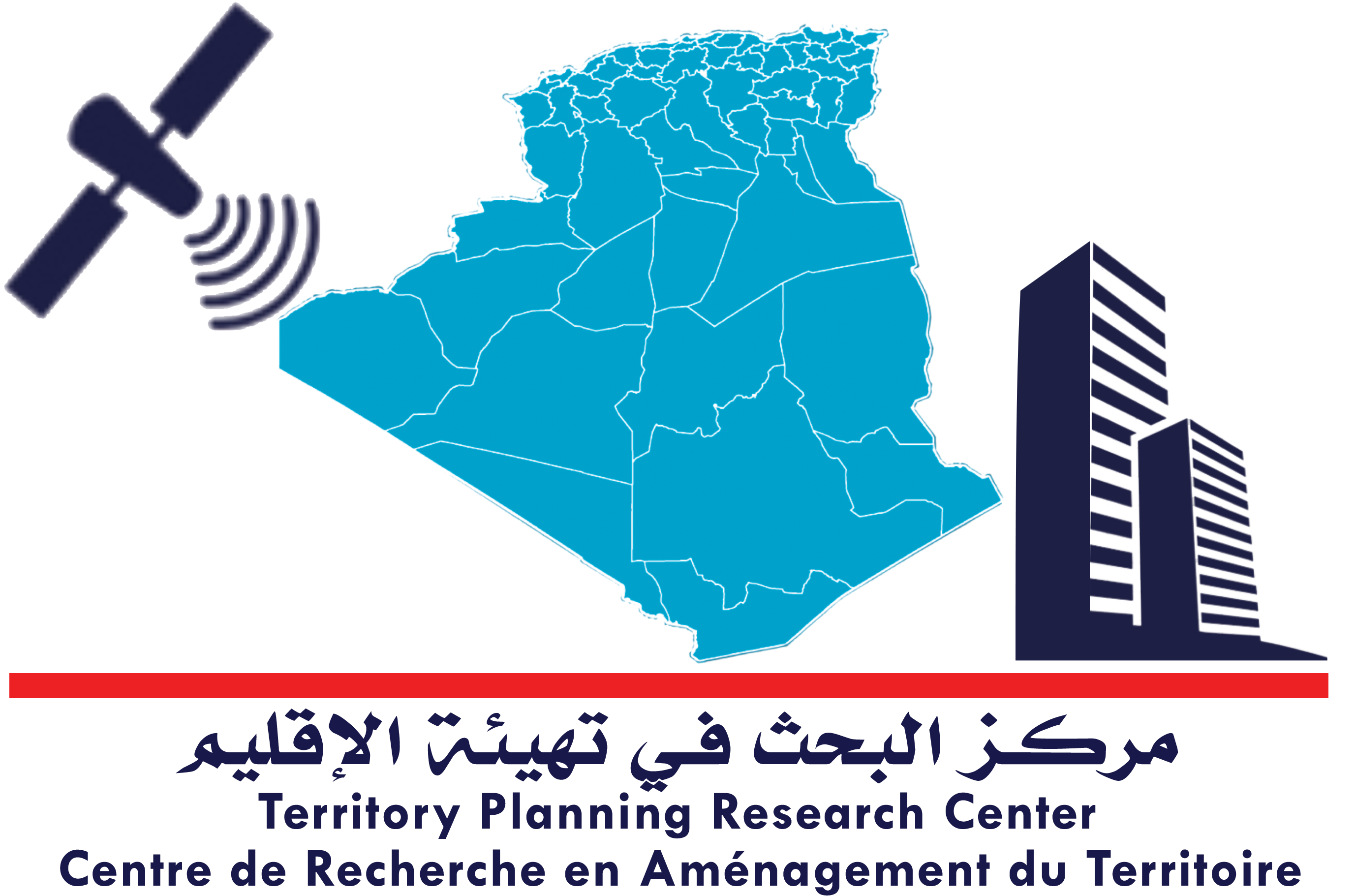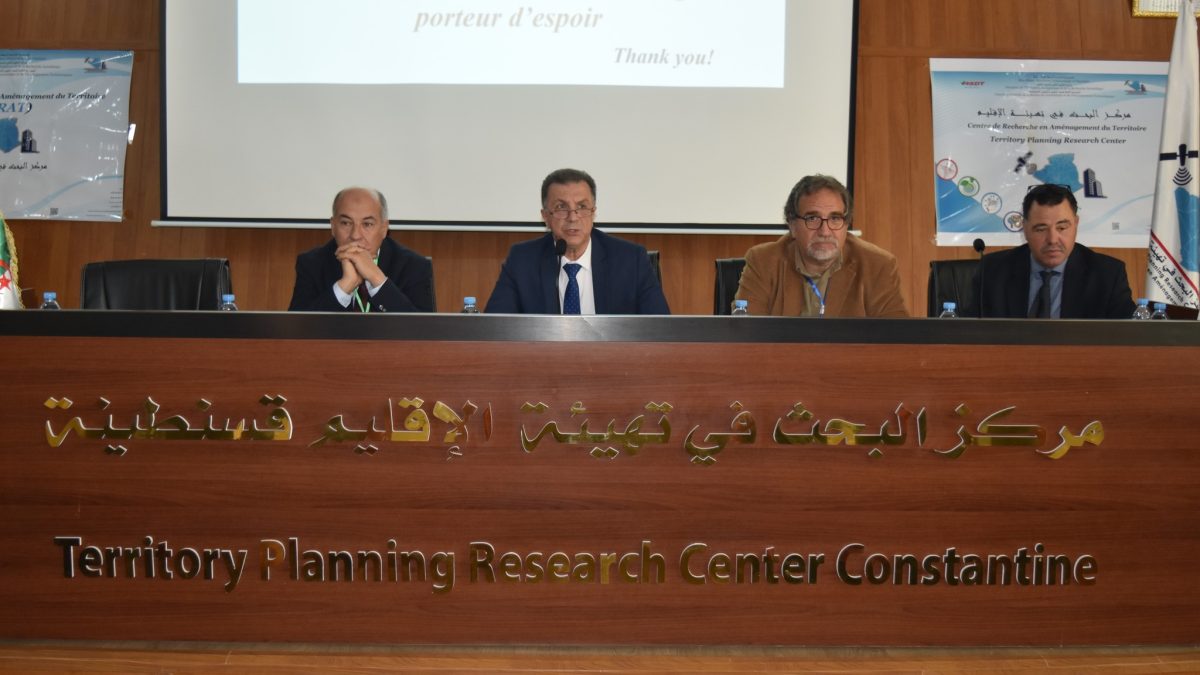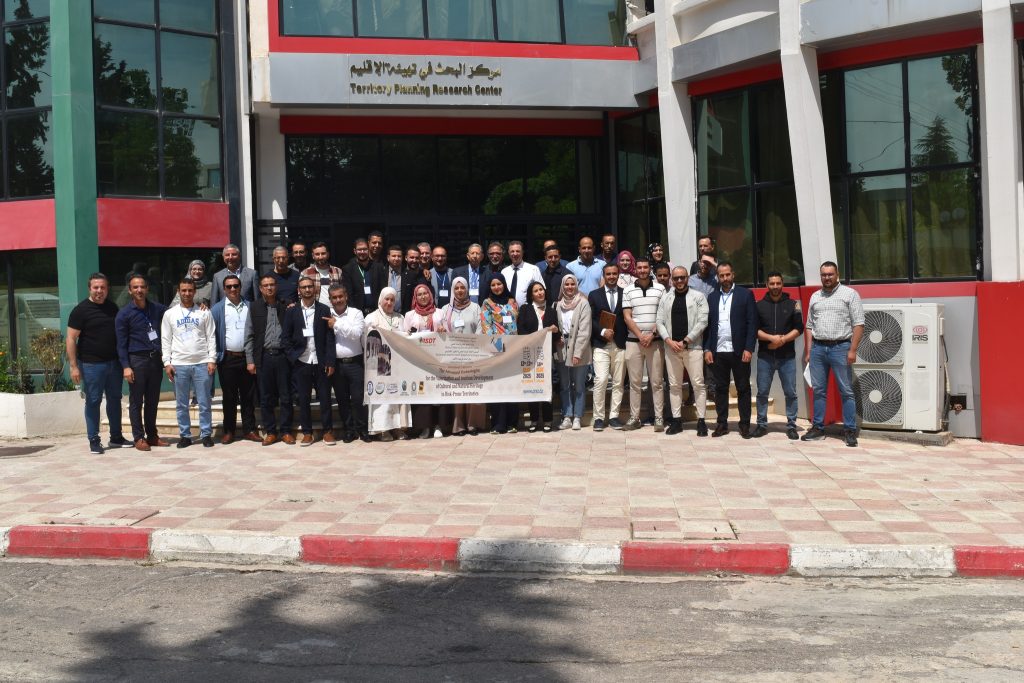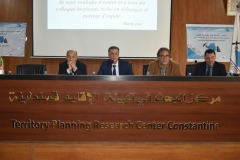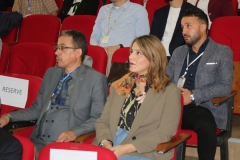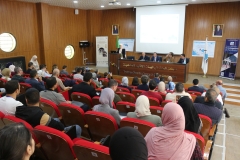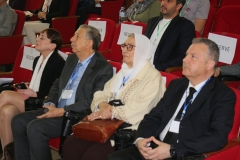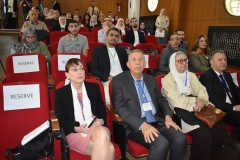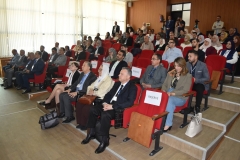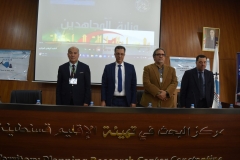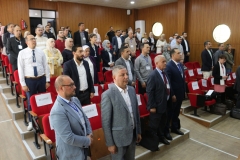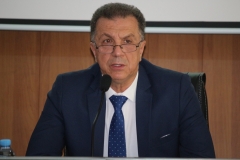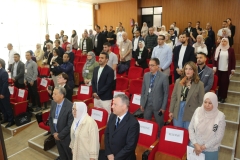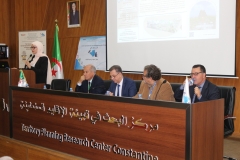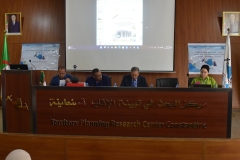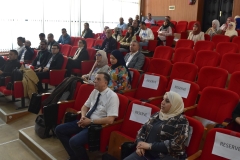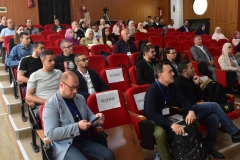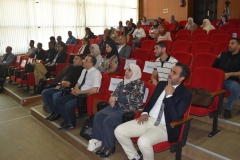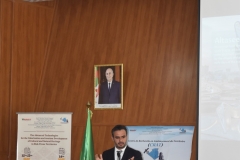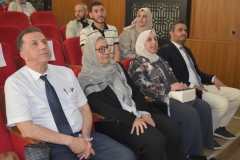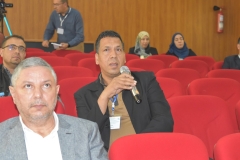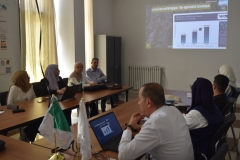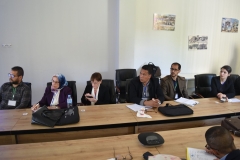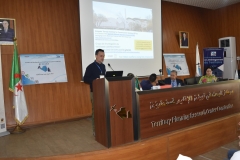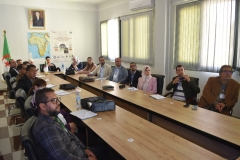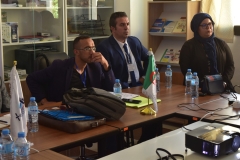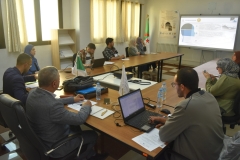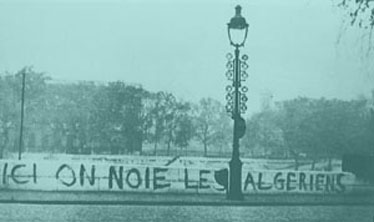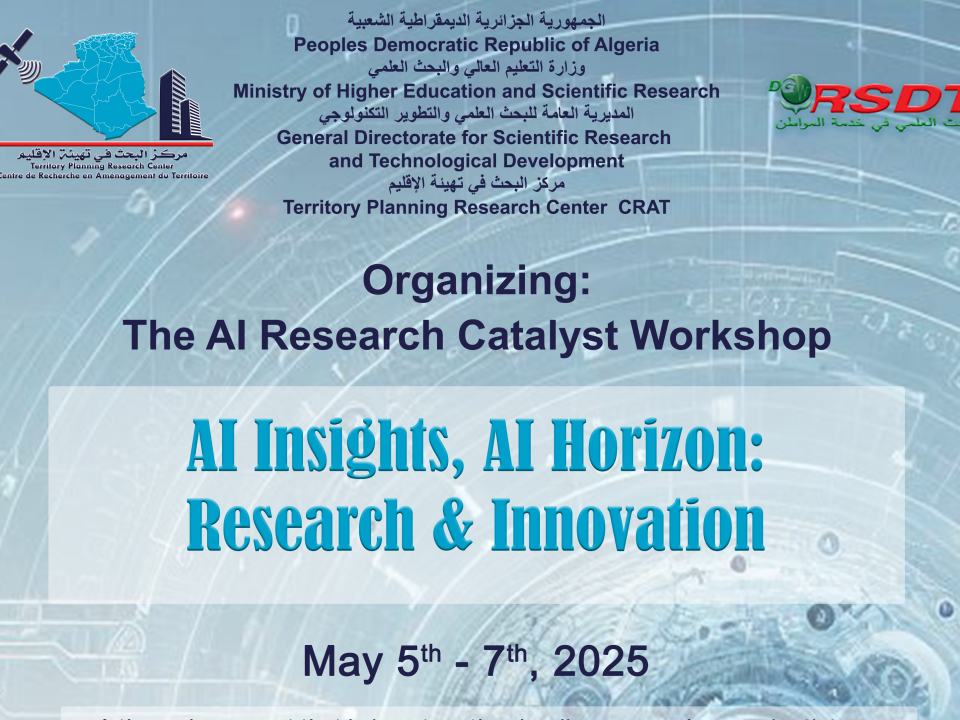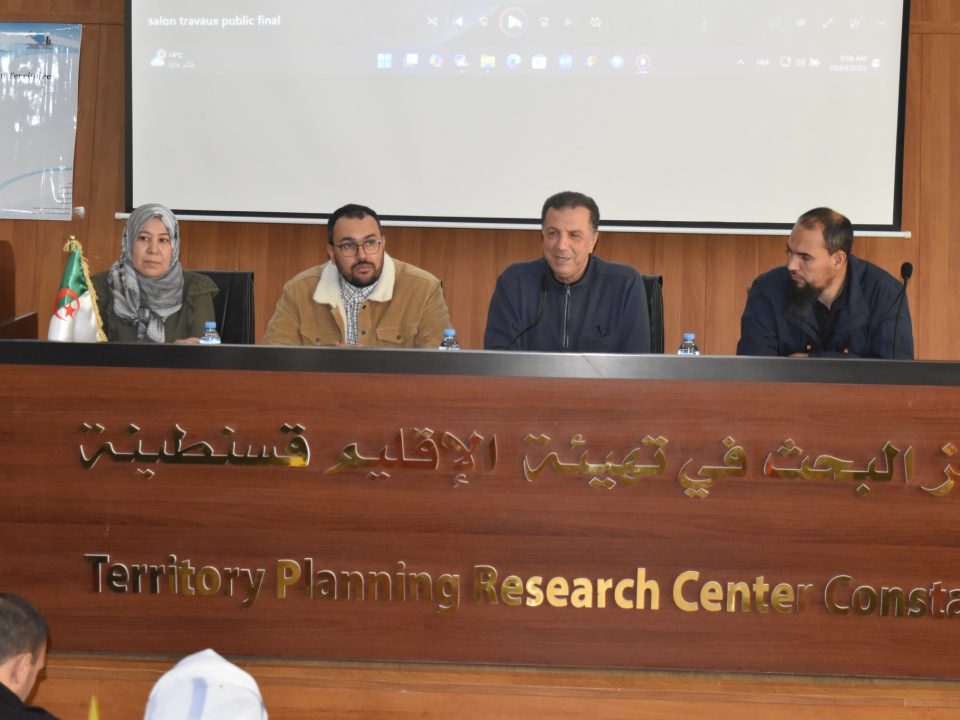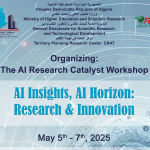
Workshop Recap: AI Insights & Innovation at CRAT
8 May 2025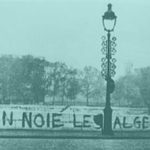
Emigration Day — A Memory of Pain and Pride
17 October 2025Back to the International Symposium on Advanced Technologies for the Valorization and Tourism Development of Cultural and Natural Heritage in Risk-Prone Territories
From May 12 to 14, 2025, the Territory Planning Research Center (CRAT) hosted the International Symposium titled “Advanced Technologies for the Valorization and Tourism Development of Cultural and Natural Heritage in Risk-Prone Territories.”
This symposium was organized in response to the growing challenges facing cultural and natural heritage in many vulnerable regions and aimed to explore new pathways for heritage-based tourism promotion through advanced technologies.
The opening ceremony was presided over by Professor Chaouki BENABBAS, Director of CRAT, in the presence of Professor Ahmed BOURAS, Rector of Constantine 1 University, along with numerous academic and regional officials, representatives from the Directorates of Culture, Tourism, and Veterans Affairs, as well as the National Army and Gendarmerie, civil society actors, and members of the national and international press.
🎙️ International Presentations and Multidisciplinary Perspectives
The second and third days of the symposium featured high-quality scientific presentations by researchers and experts from Arab, European, and African countries. Discussions tackled intersecting topics related to architecture, heritage, environment, law, and technology. The event served as a true platform for exchange between seasoned academics and young researchers.
🧩 Details of the Practical Workshops:
As part of the symposium’s agenda, four scientific hands-on workshops were held, attracting active participation from national and international researchers, professors, and experts. These workshops took place on May 13–14, 2025, and covered the following themes:
🔹 Workshop 1: Cultural and Natural Heritage as a Lever for Sustainable Regional Development
This workshop focused on integrating heritage into local development strategies through sustainable tourism projects that involve local communities and create job opportunities while preserving legacy sites. Case studies from Tunisia, and Italy were shared, with lively discussions on how to adapt these models to the Algerian context.
🔹 Workshop 2: Risks Inherent in Cultural and Natural Areas
This session addressed major threats to heritage sites, including climate change, urban sprawl, and neglect. It included on-the-ground analysis of Algerian sites such as the Roman landmarks in Constantine. Participants concluded with recommendations to strengthen legal and technical frameworks for protecting heritage.
🔹 Workshop 3: Advanced Technologies to Enhance the Attractiveness and Tourism Potential of Cultural and Natural Heritage
This workshop showcased innovative tools and applications such as 3D scanning, digital modeling, virtual reality, and artificial intelligence. A standout project by CRAT researchers demonstrated the use of AI to digitally document a Roman archaeological site in Constantine. Discussions also explored the potential of turning such technologies into interactive digital tourism products.
🔹 Workshop 4: Applying Advanced Technologies to Safeguard and Manage Heritage-Related Risks
Focused on the use of technology to monitor and analyze threats to heritage sites, this session covered remote sensing, smart mapping, and risk prediction systems. Participants explored how to integrate these tools into long-term protection initiatives.
🎓 Closing Day: Recognition and Recommendations
The final day of the symposium featured a celebratory scientific atmosphere, with the presence of distinguished figures such as Professor Mounir BOUCHENAKI and Professor Fouzi DOUMAZ. Speakers were honored with certificates of recognition, and the symposium concluded with key recommendations aimed at boosting research collaboration in heritage valorization and technology-driven preservation strategies.
🎯 Final Message of the Symposium:
Professional organization, diverse programming, and international openness were the pillars of success that CRAT demonstrated once again through this prestigious scientific event.
